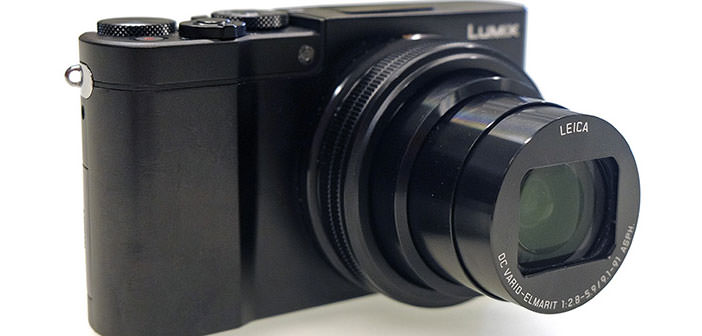Lumix TZ100 is the camera with which Panasonic falls into the arena of compact pocket premium. The CMOS sensor 20 megapixel, Panasonic has decided to pair 10x optical zoom 25-250mm equivalent.”
Earlier in the year the ads for the photographic field is divided between the CES in Las Vegas and the CP+ Yokohama: Panasonic has chosen the US showcase to showcase some of their news. In this news we speak of the two compact that the Japanese manufacturer has decided to put on the plate. We have seen how in recent years the field of premium compact will be gradually shifted from the format 1/1.7 ” format 1″ with regard to the size of the sensor.
Launched on mirrorless Nikon 1 then this format has become a must for compact that hoped to emerge from the group trying to defy openly and mirrorless SLR, featuring sensors larger size. The format of thumb has proven to be a good compromise between performance and dimensions allowing to build, on the one hand and on the other compact pocket superzoom bridge both characterized by better image quality than in the past.
Panasonic has already successfully used the sensor 1″ in its super zoom bridge with optical 25-400 mm equivalent f/2.8-4. Now debuts this type of sensor also on the TZ Series, the backbone of the family of compact Lumix series and that has represented one of the fundamental building blocks of success of the brand.
Lumix TZ100 is the camera with which Panasonic falls into the arena of compact pocket premium. At the 20-megapixel CMOS sensor, Panasonic has decided to pair 10x optical zoom Leica DC 25-250 mm equivalent, bright enough to focus with minimum aperture F2.8, but decidedly darker with the zoom fully extended, clocking F5.9. To ensure good ergonomics in all situations the camera alongside the touch screen 3″ and 1040k points an electronic viewfinder by 1160k points, in addition to a double adjustment ring.

The optical system is stabilized with the 5-axis Hybrid OIS also offers the Level Shot function, to straighten crooked horizons snapped. As for the focus Panasonic has integrated its technology Light Speed autofocus 240fps with DFD (Depth from Defocus) and promises an effective pursuit of 200% better than the old model TZ70.
The sensor can go up to ISO 12,800 natively and get extended mode up to ISO 25,600. Among the technologies dedicated to the image that defined ” natural edge Diffraction compensation processing ” should ensure crisp, sharp images even when the diffraction limit draws near, that situation occurs more than you think with the compact.
4K is one of the watchwords of this model as well as record videos in 3,840 x 2,160 30/25p exploits this feature to make available special functions. The first is 4K Photo, which allows you to extract the best from a burst frame at 30 fps at 8 megapixels; you can shoot consecutive single, hold and have a burst continues until you press and hold (overwriting the oldest frames), or allow the system which incorporates the burst before the shutter button is pressed, thus saving the photographer in Should you have clicked on the button lags behind the action.
Another interesting feature is Focus Post recently introduced; in practice, the pressure of the shutter button the camera records up to a maximum of 49 shots, with 49 different points of focus at 4K resolution (3,840 x 2,160 pixels) and at a rate of 30 fps Shooting: photographer then will the opportunity to choose the frame with the focus on the desired point. Other features include the presence of Wi-Fi connectivity. The camera will hit the market in April.

Panasonic has also thought of a younger sister for Lumix TZ100, Lumix TZ80: many of the features remain the same, but the use of a MOS sensor High sensivity 18 megapixel smaller (size 1/2.3 ” ), has allowed adopt a more push in the same size in terms of the extension of the zoom.
Panasonic Lumix TZ80 adopts fact optics 30x 24-720 mm equivalent f/3.3-6.4. There remain in his ropes the optical stabilizer, viewfinder and 4K functionality albeit with a sensitivity that stops natively in ISO 3200 and arrives in full mode at ISO 6,400.

